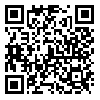Volume 23, Issue 68 (3-2023)
jgs 2023, 23(68): 43-60 |
Back to browse issues page
Download citation:
BibTeX | RIS | EndNote | Medlars | ProCite | Reference Manager | RefWorks
Send citation to:



BibTeX | RIS | EndNote | Medlars | ProCite | Reference Manager | RefWorks
Send citation to:
Zeini Vand Y, Moosavi Nadoshan S M. (2023). Organizing the spatial space of the urban rivers' margin of tourism development (case study of Poldokhtar city). jgs. 23(68), : 3 doi:10.52547/jgs.23.68.43
URL: http://jgs.khu.ac.ir/article-1-3394-en.html
URL: http://jgs.khu.ac.ir/article-1-3394-en.html
1- Master of Urban Design, Faculty of Urbanism, University of Architecture and Art, Tehran, Iran., University of Architecture and Art, Tehran, Iran.
2- Faculty Member, Department of Architecture and Urban Planning, Technical and Vocational University (TVU), Tehran, Iran, Technical and Vocational University (TVU), Tehran, Iran
2- Faculty Member, Department of Architecture and Urban Planning, Technical and Vocational University (TVU), Tehran, Iran, Technical and Vocational University (TVU), Tehran, Iran
Abstract: (9529 Views)
This study aims at organizing the city of Poldokhtar in the city of Kashkan. Using this element of natural value, the city is being restored and organized, and its potential for tourism and development of tourism and economic prosperity is to be used. The paths of the rivers within the city can be used as a linear route, and can be used as a sustainable urban tourism axis. In the case of the spatial and spatial organization of the rivers for such a purpose, various, yet standardized patterns for shaping and managing the length of rivers can be used. Finally, the findings of library studies and the results of a field survey were distributed through a questionnaire and SPSS software using the Cronbach's alpha coefficient, the coefficient obtained in this study was equal to 8,377, which indicates the appropriate credit for Data collection. In the final stage, using the AMOS software and the structural equivalence method, the relationship between the main components of the research and the constituent variables has been analyzed and analyzed. The range of results showed that the most important strategy for creating urban river tourism in Poldokhtar is the attempt to create a social and secure environment with facilities and ease of access and special emphasis on environmental and ecological issues. For this reason, the main criteria for design based on local capabilities are defined. It should be noted that in the social, recreational, historical and environmental areas the same procedure is used, which means that all the spatial and spatial regulation strategies and parameters of the river in line with the native nature and the needs of the people living in the area and in A word of the users of the project has been used.
Article number: 3
Type of Study: Research |
Subject:
Geography and Urban Planning
| Rights and permissions | |
 |
This work is licensed under a Creative Commons Attribution-NonCommercial 4.0 International License. |

This work is licensed under a Creative Commons — Attribution-NonCommercial 4.0 International (CC BY-NC 4.0)






